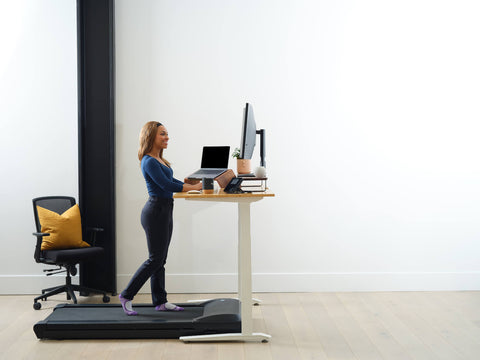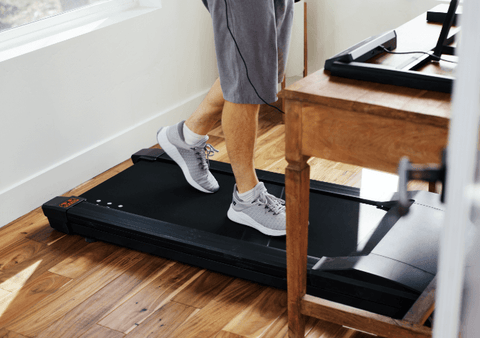People who have worked to cultivate a fitness routine and muscular physique have invested a lot of time and energy to reach their current status. As a result, they may sometimes worry about how time away from the gym due to an injury, vacation, or something else will impact their gains.
Of course, building muscle demands that rest time be built into a routine. In addition, it's important to maintain proper hydration levels and intake high-quality collagen protein powders to increase muscle mass. However, even when paying close attention to rest and hydration, not exercising for a long time can result in the loss of muscle mass or strength. This begs the question:
How long after you stop lifting will you start to lose muscle?
The muscle will fade over time, unlike belly fat, which seems to stick around far longer than anyone desires. However, many factors will determine the rate at which a person loses muscle due to inactivity.
Factors that Impact Muscle Loss
Several variables will influence the rate at which a person loses muscle from not exercising. Some of the most potent of those forces include:
Current Level of Fitness
Your current level of fitness has a lot to do with your potential rate of muscle loss. For this discussion, we will break folks down into three groups:
- Athletes
- Non-athletes
- Inactive
For a person to fall into the “athlete” category, they must either exercise an average of five to six times a week throughout the year or exercise at least three times a week for several consecutive years.
This group is going to be the least prone to quick muscle loss. According to a 2013 study on muscle development, retention, and decay rates among specific athletes, declines in muscle strength would become noticeable in about three weeks. Thus, athletes can take between two and four weeks off from training without seeing any noticeable losses.
Nonathletes, on the other hand, are those who do not exercise five times a week or who have not been working out for very long.
Surprisingly, a 2012 study on comparative muscle hypertrophy found that these folks, too, can engage in roughly three weeks of inactivity without seeing substantial losses.
Naturally, those who are inactive, meaning that they only exercise a couple of times a week and have not been doing so for long, will lose muscle gains the most quickly of all groups.
Age
Age can impact people in unexpected ways. For instance, the older generation should be drinking more water.
As a result, older people who do exercise are urged to carefully monitor their water intake and utilize a sugar-free electrolyte powder to remain well hydrated.
Similarly, as people age, it becomes increasingly difficult to maintain muscle mass and strength. Thus, older people will experience a bigger drop during a window of inactivity compared to younger people.
Fortunately, where sex is concerned, this does not appear to be a factor in how quickly a person will lose muscle strength or mass during a break. Therefore, men and women will lose muscle at a similar pace.
Practicing Active Recovery
Active recovery, which preserves muscle mass during breaks from intensive workouts, involves engaging in low-intensity exercises, such as light jogging, swimming, or yoga, which maintain muscle engagement without the stress of heavy lifting. This method boosts circulation, aiding in nutrient delivery and waste removal, and keeps the neuromuscular pathways active, reducing the pace of muscle loss. It’s a way to ensure muscles remain conditioned, even when taking a step back from regular high-intensity training.
Incorporating active recovery into times of rest or reduced workout intensity can significantly mitigate muscle atrophy. Opt for gentle, low-impact active recovery exercises and maintain a consistent routine to keep muscles engaged, and listen to your body’s needs, adjusting as necessary. Active recovery is not just about maintaining muscle mass; it's also about fostering a balanced approach to physical health, ensuring a smoother transition back to more demanding exercise routines, and maintaining long-term fitness sustainability.
Having access to fitness equipment at home makes active recovery more convenient. When it comes to the best recovery tools for athletes, treadmills and ellipticals come to mind. Which is best between elliptical machines vs. treadmills depends on what you find more comfortable --- this treadmill buying guide for home might be helpful.
Building Back Muscle
While three weeks or less might seem like a pretty small window of time for your gains to start disappearing, the good news is that the better shape you are in when the break starts, the more quickly you will bounce back.
This is largely due to the fact that you have already trained your body to run, lift, and engage in similarly strenuous activities. As a result, you will not be starting from scratch and will regain your lost ground much more quickly than someone who is just getting started.
Losing Muscle Mass and Strength
There are events in life that will sometimes derail our exercise routines. These circumstances could range from an injury to having a baby and everything in between. Three weeks seems to be the general threshold at which people will begin to lose muscle mass and strength. However, if you need to stay away from the gym longer, don’t be afraid to do so, especially if you are already in good shape.
Your body will bounce back relatively quickly, and you’ll get yourself back to your baseline level of fitness in no time. Additionally, keep in mind that most life events don’t need to sideline you from exercise completely. Even a small amount of strength training or cardio can help you maintain more of your muscle than if you were to become completely inactive.
LifeSpan understands the importance of physical fitness. In addition to extending a person's lifespan, we know mental and emotional health can be improved through exercise. That's why, on top of manufacturing top-of-the-line home fitness equipment, we provide useful resources to help you understand topics such as how many calories to lose weight and our calories to maintain weight calculator. LifeSpan has you covered for all things fitness. Visit our store page to learn more about our fitness products, or dive into our blog archives for more fitness tips and tricks.








